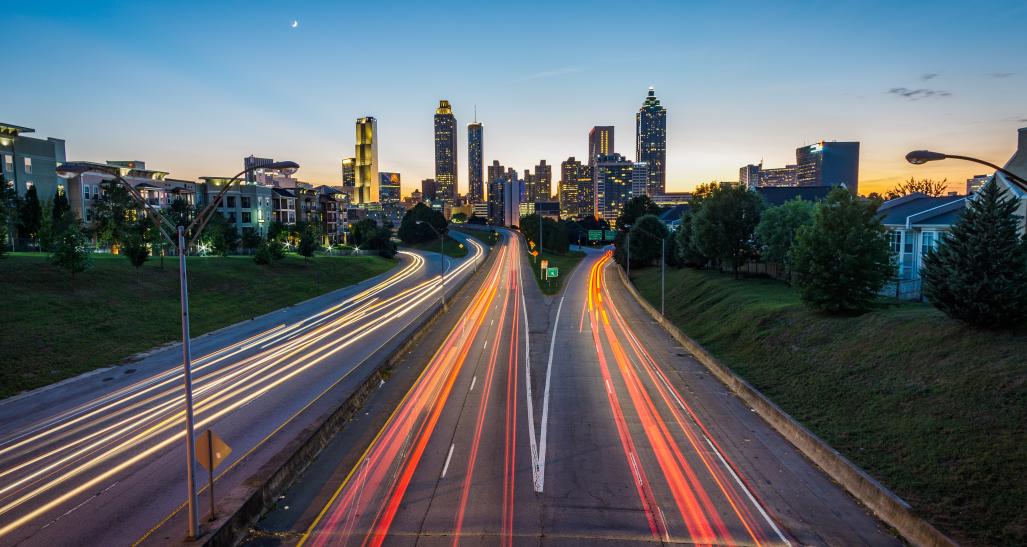
President Trump has cited infrastructure investment and reform as one of his top priorities from the very beginning of his administration.
In his Election Night victory speech, Trump promised to give the nation a transportation system “second to none” and to “put millions of people to work as we rebuild it.” After taking office, he chose Elaine Chao — a veteran of multiple senior-level government transportation roles in addition to being a former labor secretary — to head the Department of Transportation. And he selected D.J. Gribbin, former general counsel at Transportation and chief counsel at the Federal Highway Administration, as a top advisor working full-time on infrastructure issues.
Trump reiterated his commitment in this year’s State of the Union address by promising “safe, fast, reliable and modern infrastructure that our economy needs and our people deserve.” He asked Congress for $200 billion in federal seed money that would be leveraged with state, local and private funds to bankroll a massive $1.5 trillion infrastructure campaign, and he promised to streamline the permitting process for construction projects to a maximum of two years.
Yet here we are during the annual commemoration of Infrastructure Week and the promised plan to rebuild highways, bridges, tunnels and airports hasn’t moved forward. Congress is expected to complete piecemeal work this year on funding for airports and waterways but turned down Trump’s request for funding for an overall infrastructure plan.
Here we are during the annual commemoration of Infrastructure Week and the promised plan to rebuild highways, bridges, tunnels and airports hasn’t moved forward.
Senate Majority Whip John Cornyn, R-Texas, said as far back as February that it would “be challenging” to get infrastructure done during 2018. And White House Press Secretary Sarah Huckabee Sanders said just last week that a comprehensive infrastructure package is no longer expected to move this year. Even though it’s only May, election year tradition is that the summer and fall get taken over by campaigning, with little accomplished in Washington.
What happened? Infrastructure got sidetracked, sunk and roadblocked by a particularly intense year of Washington politics.
Rather than becoming the year of infrastructure, 2018 has turned into the year of tariffs and threatened trade wars — and the year of battles over immigration, the continuing investigation into whether Russia meddled in the 2016 election and firings and resignations of Cabinet members and key White House staff. And those are just a few of the headlines.
This year has been a missed opportunity so far. Infrastructure is one of the few truly bipartisan issues, and the White House and Congress could have come together to make infrastructure another victory on top of the landmark tax reform bill passed in 2017. The combination of tax reform and an economy-boosting, job-creating infrastructure campaign could have given all lawmakers a platform of solid accomplishments to cite during this fall’s midterm elections.
Meanwhile, America’s infrastructure has taken a backseat. Roads and bridges universally used by travelers and industries alike continue to crumble, risking safety while limiting commerce and leading to economic inefficiency. The American Society of Civil Engineers recently gave the country’s infrastructure a D-plus, and the American Road and Transportation Builders Association says 54,000 of the nation’s 612,000 bridges are structurally deficient.
Our nation needs a 21st century infrastructure system that fully connects the retail supply chain.
This isn’t the first time infrastructure spending has been left in limbo. The five-year transportation bill signed into law in 2015 was the first long-term measure in a decade, following a series of short-term funding extensions, some of which lasted as little as a few weeks. Long-term planning cannot be done based on short-term funding.
The result of repeated failures to provide a large and lasting solution is that U.S. transportation infrastructure has suffered from decades of underinvestment that has created growing inefficiencies and bottlenecks that make it increasingly difficult for American companies to expand their businesses. Retailers are among the nation’s largest shippers, moving hundreds of billions of dollars of merchandise via the nation’s ports, railroads and highways each year, and see their supply chains hampered daily.
Our nation needs a 21st century infrastructure system that fully connects the retail supply chain so retailers can get their goods through the ports, to distribution centers and warehouses by truck or train, and ultimately to consumers in stores or directly in their homes.
In January, Trump promised “gleaming new roads, bridges, highways, railways and waterways across our land.” Gleaming would be nice, but infrastructure that is simply free of rust, potholes and bottlenecks would be a huge step forward. But that takes money and political commitment. No matter which party holds control of Congress after this fall’s elections, it’s time for policymakers to finally come together and make infrastructure the priority it needs to be. We cannot allow 2019 to be another year of lost opportunity.